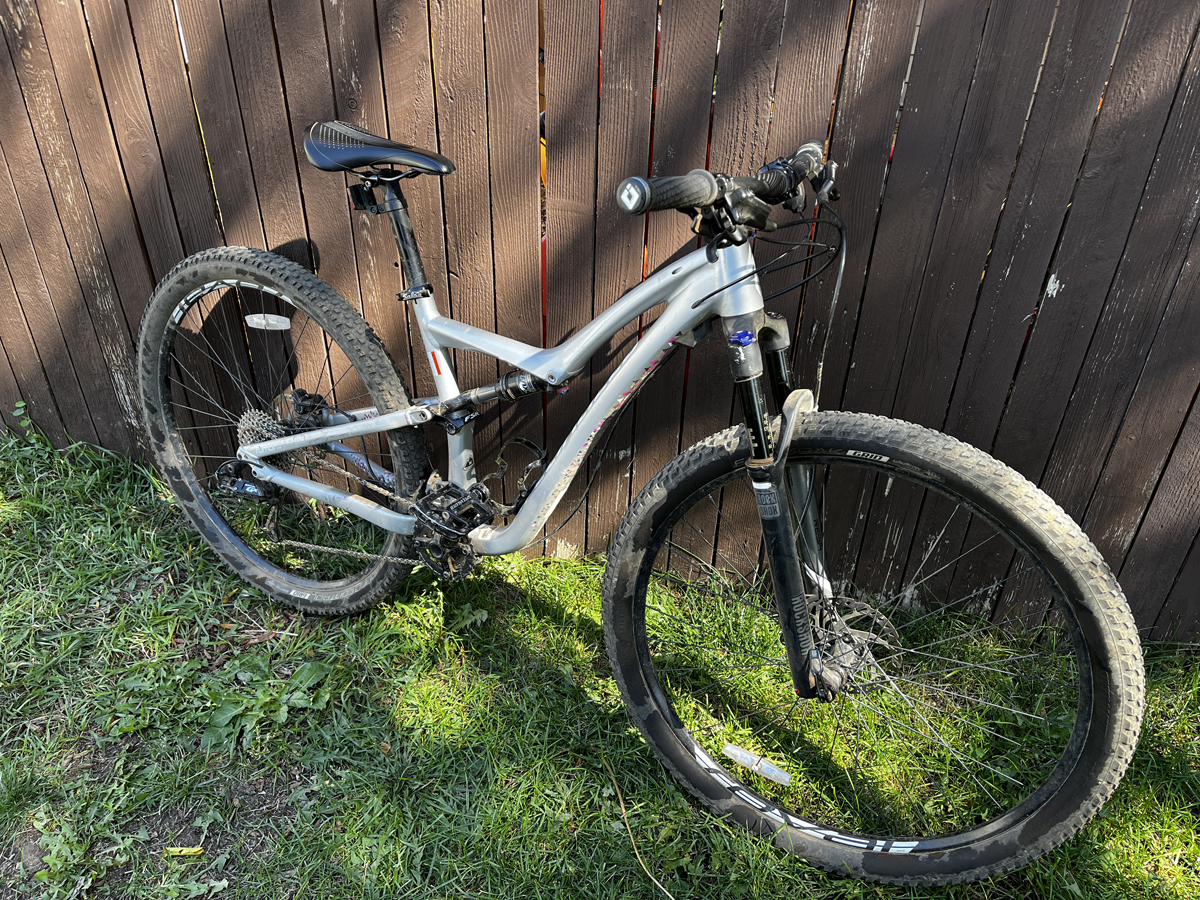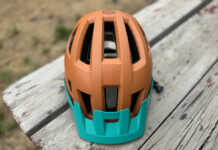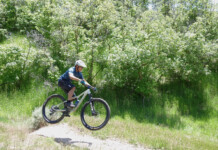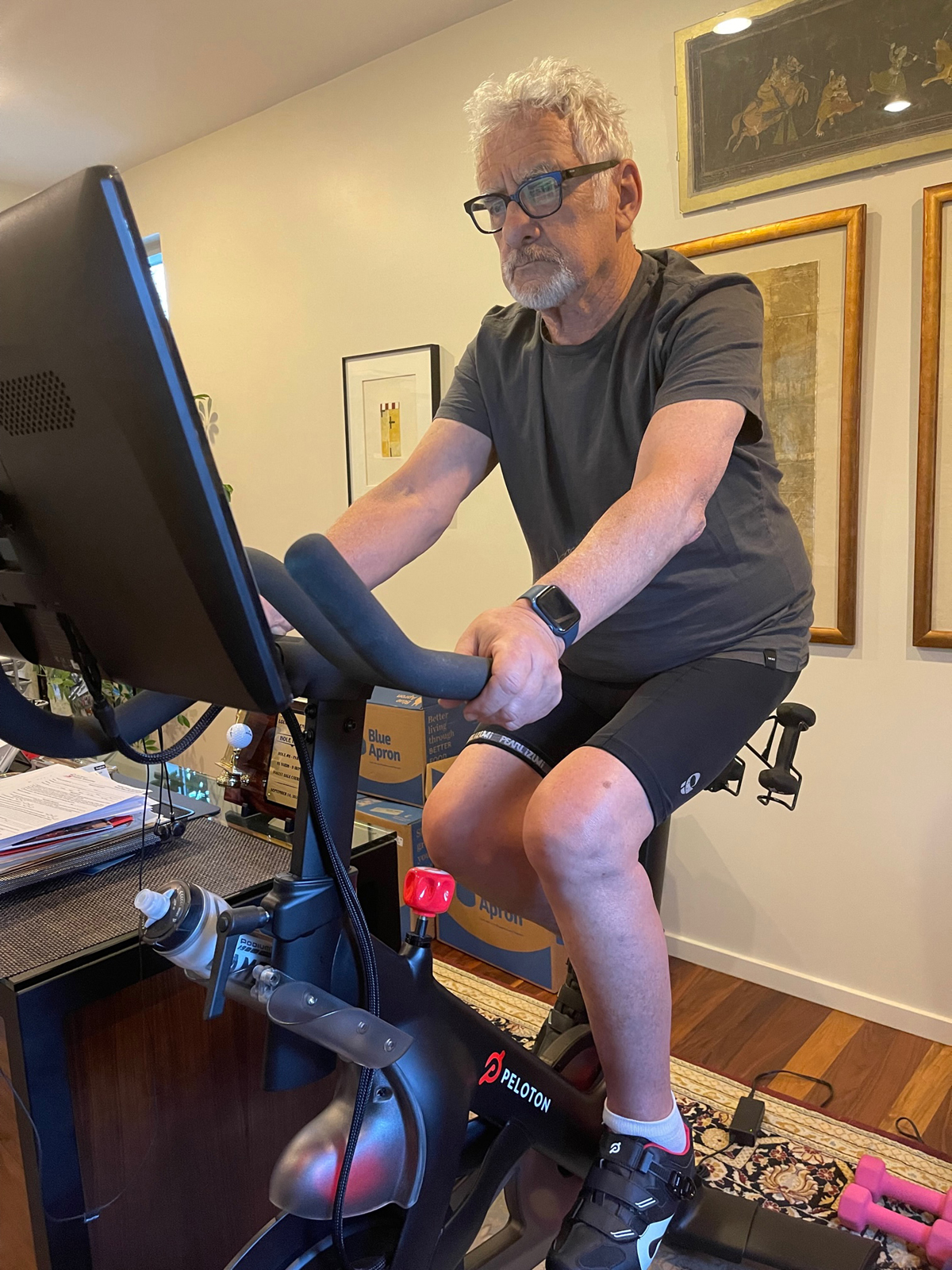By Erik Ramirez — The beauty of a mass-produced mountain bike has little to do with the nature of the construction, or the build. Most of our mountain bike frames and hardware are built elsewhere on the planet. Much is produced by machines. Frames still require quite a bit of human involvement.
Beautiful lines are rarely created anymore. If you’re lucky enough to get a hand-built frame, then you can witness the hard-to-attain perfect welds of a steel or titanium rig. Carbon doesn’t fit much into this discussion.
Is time passing too quickly for us? Are the exquisite beauties of hand-made machines fading into the ether?
Recently, I was working on a bike that has been ridden consistently every season since it was purchased, having serviced it each of those seasons. I have watched the fresh paint fade, seen scratches appear, heard creaks as they’ve come and gone, and rebuilt every component.

This most recent service I had the wheels, fork, and shock off the frame. With the frame hanging by the saddle, I was able to inspect the rarely seen under-side of the machine. Specialized ran the brake hose along the bottom-side of the downtube, and despite having initial concerns about rocks crushing or cutting the line, this never happened. In addition, a short, but small, groove from the hose has been worn into place from the years of microscopic movements.
The owner has always been friendly, and willing to keep the bike running at 100% condition, but she makes her visits short. My relationship with this bike is older, more intimate. I’ve taken it apart and read the story from a perspective that only mechanics ever see or appreciate.
It’s unique. I have known the quirks and intricacies of this bike longer than I have owned any of my own rigs, whether road or mountain. The emotion is fondness, tenderness, strangely like that of an old friend who can only come around occasionally.
When I look at the grease coming from the lower bearing of the headtube, I pull the fork and clean it up. The bearings are nothing special. They are the low-grade factory bearings that came with the bike. We all know that only the top-tier equipment from any brand is exclusively served up with aftermarket quality headset bearings. But the bearings on this bike have been pulled every year with the fork service, cleaned, greased, reinstalled, and sent away ready for the next season of riding.
The chain seems loose. It flops up and down and side to side when I bounce the bike, despite the stiff spring of the SRAM rear derailleur. Sure enough, it measures long and it’s time for a new one for this season.
When I compress the fork, it collapses. The left dust-wiper pops up a little more from its seat in the lower. This telltale failure is primarily from blown air-spring seals. The fork needs a full overhaul. Some shops offer an “overhaul,” but often they’re only servicing the lowers, which does not include air-spring service, but if luck prevails you get a damper bleed, whatever that means.
The grey paint on this frame was once a rich, deep grey. Now faded from a decade of summer rides in the high mountain sunlight, it serves as a reminder that some things really had more color years ago. Like the wrinkles of the aged, this bike has traded glossy, deep color with rich miles and experience; its rider claiming memories that cannot be replicated nor replaced.
Recalling all those rides, the frame weeps small rings of light grease from the pivot hardware. With the rear shock removed, the pivots move freely, unencumbered by binding resulting from worn and pitted bearings. I can keep those bearings satisfied for another season by removing the seals and inserting the tiniest bit of waterproof grease.
The rear shock goes back on with blue Loctite and some elbow grease. With the frame hardware reassembled, polished and new seals installed, the bike starts to resemble the original machine again. The wheel spin lightly and smooth, but the brakes need to be serviced in a bad way.
Mineral oil has a lot of additives. It breaks down readily with heat and pressure, and this bike has that kind of system. As I purge the old, blackening mineral oil from the reservoirs, lines, and calipers, each brake hungrily consumes 40cc’s of new, translucent pink fluid. At first test they already feel better: smoother, lighter actuation, and firmer.
No matter how many times I do this, the brakes will eventually fail. Although we have kept them operating well through regular maintenance, eventually that will not be enough. They will have completed their journey.
The modern mountain bike is relatively new in the grand scheme of cycling. This frame may last several more decades. And as long as the frame maintains integrity and I continue to see it from service milestone to service milestone, it could out last us all. Replacement parts are relatively easy to find. Frame parts, not so much. However, this bike’s retirement seems imminent. That I must lament.
The machines we create and maintain to experience this strange mélange of exercise and pleasure tell many stories. Mechanics know the language that goes unheard and unread. Like the friend you’ve made at the coffee house, someone you only see there. You talk, discuss the world, get to know one another but that is all. This is the only place you ever meet. Then one day, your friend just stops coming. And you never see them again.
For a professional mechanic, this is how it feels when a bike is retired, but there are always more bikes to service, and more memories to make.
Eric has over 20 years experience working on bikes, starting in Park City. He has recently opened his own business with the aim to teach people about bikes and how to work on them, while still offering some mobile repairs. www.insightbike.com








